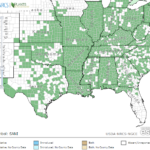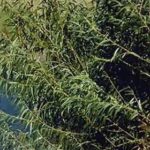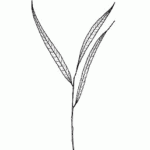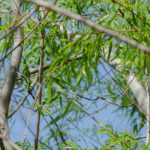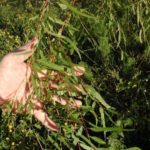Salix nigra
USDA, NRCS. 2018. The PLANTS Database (http://plants.usda.gov, 28 March 2018). National Plant Data Team, Greensboro, NC 27401-4901 USA.
Illustration: USDA-NRCS PLANTS Database / Britton, N.L., and A. Brown. 1913. An illustrated flora of the northern United States, Canada and the British Possessions. 3 vols. Charles Scribner’s Sons, New York. Vol. 1: 592.
What is a Willow?
Physical Characteristics
- Tree up to 63 feet tall
- Somewhat shrubby when young
Leaves:
- Small leaves up to 0.47 inches long
- Leaf stalk 0.16-0.39 inches long
- Blades linear or sword-shaped
- 2-3 inches long
- 0.2-0.59 inches wide
- Deep green in color
Flowers:
- Slender
- Cylindrical
- 0.79-3.15 inches long
- Yellowish in color
Fruit:
- Egg- or cone-shaped
- 0.12-0.2 inches long
Stem/Trunk:
- Sometimes with several trunks
- Flaky, dark brown to blackish colored bark
- Branchlets and twigs brittle at base but tough and flexible above
Where Does it Grow?
Willow can be found along the banks of streams and in ponds, lakes, meadows, and other water bodies.
All trees should be kept off dams because their roots can penetrate the core and make them leak and they have high evaporation rates.
Pros and Cons of Willow
Willows are used as nesting sites for many species of birds. Leaves and buds of willows are consumed by some birds and mammals. Submerged portions of all aquatic plants provide habitats for many micro and macro invertebrates. These invertebrates in turn are used as food by fish and other wildlife species (e.g. amphibians, reptiles, ducks, etc.). After aquatic plants die, their decomposition by bacteria and fungi provides food (called “detritus”) for many aquatic invertebrates.

